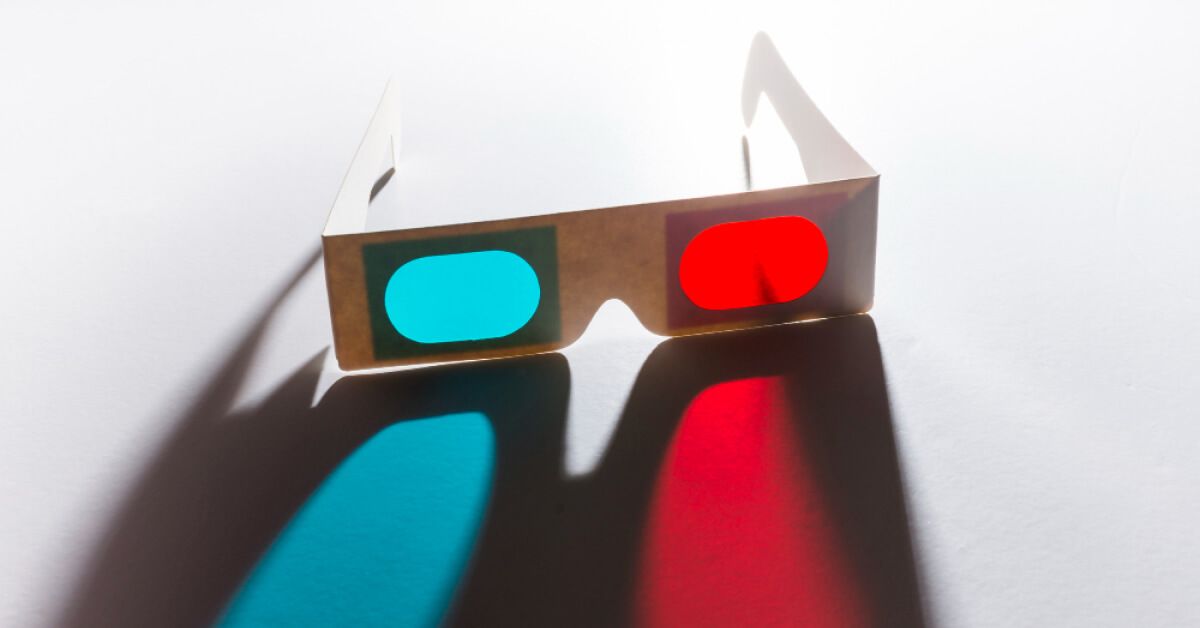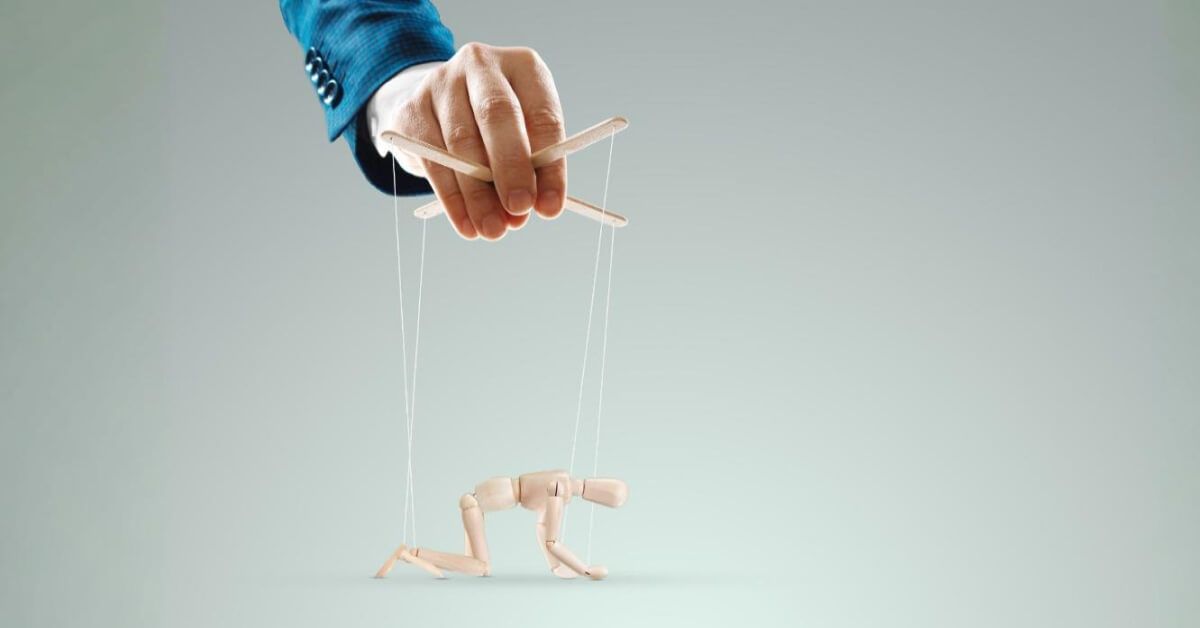A deep dive into contrast bias: Psychology, workplace impact, and HR solutions

Imagine judging a painting not on its own beauty, but because the masterpiece next to it stole the spotlight. Suddenly, the good piece feels... average. That’s contrast bias in action—when your perception of something gets unfairly swayed by what you just saw.
Now, picture this happening at work. A solid candidate interviews right after a superstar, and suddenly they seem “just okay.” Or a steady performer gets overlooked because they’re compared to a colleague having a record-breaking quarter. It’s not that the second person is lacking—it’s that our brains are wired to contrast and compare, often without even realizing it.
This hidden bias can quietly distort decisions around hiring, promotions, employee feedback, and team dynamics if left unchecked. But the good news? Once you spot it, you can fix it. In this blog, we’ll break down the psychology behind contrast bias, explore its impact on the workplace, and arm you with HR strategies to fight back.
What is contrast bias?

Contrast bias is a cognitive bias that occurs when the evaluation of a candidate, person, or object is influenced by a direct comparison with others presented in the same order. This often leads to biased judgments, where someone may appear better or worse depending on the context created by those they are compared against.
In social psychology, this is known as the contrast effect, and it’s especially problematic when applied to the recruitment process. For example, if a first candidate is exceptionally skilled, the second candidate may be perceived as less competent, even if they meet the objective standard. This is known as a negative contrast effect.
On the flip side, when a weaker candidate precedes someone with average candidate's qualifications, the latter may benefit from a positive contrast effect. Either way, the actual ability of the person gets distorted by comparison.
What makes contrast bias particularly tricky is how unconscious it is. The contrast effect psychology shows us that even technical evaluations, structured interviews, or team meetings are not immune. And while this bias often flies under the radar, its presence in contrast bias in HRM decisions or contrast bias in recruitment can skew hiring outcomes and derail fair evaluating candidates.
The impact of contrast bias in the workplace
Contrast bias doesn't just live in the brain—it leaks into decision-making, hiring panels, and promotion lists. When contrast bias quietly guides choices, the damage is subtle but widespread.
Here’s how this cognitive bias creates ripples across your workplace:
- Skewed hiring decisions: When interviewing candidates, the impression of the first candidate can set a false benchmark. If that person is from a prestigious school, the second candidate with real-world experience might be unfairly dismissed—even if they have the necessary skills for the job.
- Inconsistent performance reviews: In performance reviews, if two employees are assessed in close succession, the one following a low performer may receive exaggerated praise. This successive contrast results in biased judgments that favor comparison over consistency.
- Unfair candidate evaluations: During the interview process, contrast bias affect shows up when hiring teams compare candidates based on who came before rather than their individual merits. This is especially harmful in unstructured interviews, where a lack of standardization fuels contrast error.
- Faulty technical evaluations: When assessing a candidate's qualifications through tasks or tests, a strong or weak performance by previous candidates can distort the perception of other candidates, triggering a contrast effect bias.
- Disrupted recruitment process: A strong early impression during the recruitment process can shape expectations, making multiple candidates look better or worse based on who they followed. This chain reaction highlights the contrast bias in recruitment.
- Unbalanced team dynamics: If one attractive person is constantly favored over others, it reflects how contrast bias can penetrate not only the hiring process but also influence choices in team meetings and promotions.
Positive contrast effect vs negative contrast effect

In both cases, the contrast effect bias leads to decisions that are based less on a candidate’s qualifications and more on misleading comparisons. Here's how both sides of this bias manifest:
| Aspect | Positive Contrast Effect | Negative Contrast Effect |
|---|---|---|
| Definition | A candidate looks better than they are because they follow weaker candidates. | A candidate looks worse than they are because they follow stronger candidates. |
| Impact on Candidate Perception | Average performance seems exceptional, leading to an inflated evaluation. | Strong performance seems mediocre, leading to an undervalued evaluation. |
| Common Scenarios | After several poor interviews, an average candidate appears outstanding. | After an exceptional interview, a good candidate seems unimpressive. |
| Contrast Effect Bias in Evaluation | Judgment is based on how candidates compare to each other rather than to objective criteria. | Judgment is distorted by comparison, not by the actual skills or performance of the candidate. |
| Implications for HR Professionals | May inadvertently advance underqualified candidates if relying on relative comparisons. | May miss out on highly qualified candidates due to skewed perception influenced by order of interviews. |
| Mitigation Strategies | Use structured interviews, predefined scoring rubrics, and blind evaluations to reduce bias. | Ensure consistent evaluation standards across all candidates, regardless of interview order. |
7 Areas of workplace contrast bias
Contrast bias doesn't just show up during interviews—it infiltrates various touchpoints of the employee lifecycle, often shaping outcomes without anyone realizing a shift in perception has occurred.
From talent selection to daily operations, the contrast effect can quietly distort fairness. Here's where contrast bias tends to sneak in across the workplace:
- Hiring process: When evaluating candidates in succession, the performance of the first candidate heavily influences how the next is perceived. This contrast effect bias can impact the deciding factor in hiring decisions, often favoring candidates based on their placement in the interview lineup rather than their actual capabilities.
- Job descriptions and applications: Bias occurs when hiring managers unintentionally use biased language while drafting job descriptions. This creates a systemic bias that attracts a specific type of candidate, often influenced by comparisons to previous candidates who "fit" the role.
- Interview process: Unstructured interviews allow more room for snap judgments. Comparing candidates against each other rather than an objective standard often results in contrast error, especially when interviews are conducted in the same order without a standardized set of criteria.
- Performance reviews: When two employees are reviewed back-to-back, the better or worse performance of one can unfairly influence the evaluation of the other. This leads to biased judgments that are less about individual merit and more about recent comparison.
- Team meetings and visibility: In team discussions, a person who follows a less articulate colleague may seem more competent. This subtle contrast bias affect can skew perceptions of leadership potential or collaboration skills.
- Salary negotiation: Comparing salary expectations between multiple candidates can lead to unfair offers. A candidate may receive a lower offer just because the previous candidate negotiated more assertively.
- Talent engagement strategies: Bias that occurs from contrasting personalities or performance styles may impact how organizations approach employee engagement. This can lead to unequal recognition or retention strategies that aren't based on individual contributions.
Contrast effect bias examples
Understanding the contrast effect bias becomes easier when we look at how it shows up in real, relatable scenarios at work.
These examples span across hiring, evaluation, and even everyday judgments that happen without us realizing they’re driven by unconscious bias. Below are several contrast bias examples that reveal just how pervasive this bias can be:
- Recruitment interviews: A hiring manager meets a highly polished first candidate with advanced communication skills. The next person, who may have stronger technical qualifications, appears less impressive simply due to the immediate comparison. This is a classic example of contrast bias in recruitment, where the contrast effect skews how candidates are perceived.
- Evaluating candidates in panels: In a panel interview, multiple candidates are seen in a row. If the first candidate gives a poor performance, the next person may seem more competent than they actually are. This bias occurs when interviewers compare candidates based on sequence rather than content, leading to contrast effect bias.
- Performance ratings: During performance reviews, a manager evaluates two employees back-to-back. The second employee seems worse than they are because the first one just had an outstanding quarter. This is not a reflection of the second employee's own merit but a direct result of contrast error.
- Technical evaluations: When candidates take part in skills tests or challenges, the memory of how previous candidates performed affects how the current one is scored. The contrast effect bias can make the results seem better or worse depending on who was seen before.
- Onboarding perceptions: A new employee is compared to another recent hire who was exceptionally quick to ramp up. Even if the current hire is performing well, the comparison leads to biased judgments that ignore individual learning curves.
The psychology behind contrast bias
Contrast bias psychology is deeply tied to how our brains are wired to process information through comparison rather than isolated judgment. In various contexts, including hiring and evaluating performance, this tendency becomes even more pronounced. Here's what social psychology reveals about the underlying mechanisms:
- Contrast effect psychology: Our minds naturally compare new information against what we've just seen. When two models or two employees are presented in succession, the second is often judged not on their absolute value but relative to the first. This is how the contrast effect begins to override objective evaluation.
- Cognitive bias at play: Contrast bias is a form of cognitive bias, where we rely on mental shortcuts. These shortcuts help us make quick decisions, but they often sacrifice fairness and accuracy. The bias that occurs in these moments isn’t deliberate—it’s unconscious and driven by flawed perception.
- Successive contrast and perception shifts: Successive contrast leads to exaggerated differences. If a first candidate is highly skilled, the second candidate may appear significantly worse—even if they meet the company standard. This warped perception is driven by how we process extremes.
- Comparison addiction: The brain likes to compare. Whether it’s a new car or a candidate’s resume, comparing makes the process feel clearer—even if it leads us away from truth. This instinct to compare candidates based on previous candidates often overrides evaluating candidates based on individual merit.
- The role of bias in memory recall: When evaluating candidates or making hiring decisions, our memory often favors dramatic differences. A candidate who followed someone average or unremarkable may stand out more due to contrast, not qualifications.
How contrast bias affects hiring and talent evaluation

Contrast bias has a sneaky way of reshaping hiring decisions and talent evaluations without anyone realizing it. While it may seem like you're assessing each candidate fairly, the truth is, contrast bias affect can completely shift your perception based on the order and quality of candidates previously seen. This kind of bias not only impacts the hiring process but can influence long-term talent development. Here's how it unfolds:
- Shifting expectations during hiring: When the first candidate in an interview performs exceptionally well, subsequent candidates may be judged more harshly. Even if those later candidates meet the necessary skills criteria, they can seem worse depending on the bar set earlier. This contrast effect bias can disqualify strong candidates purely because of timing.
- Talent overlooked in comparison: During evaluation cycles, particularly in performance reviews or technical evaluations, employees may be rated lower if they follow someone with standout achievements. Instead of assessing each individual on their own merit, managers fall into the trap of comparing candidates based on who came before them.
- Bias in evaluating candidates: Hiring managers are especially vulnerable to bias when interviewing multiple candidates. When comparing candidates in rapid succession, biased language, assumptions, and snap judgments tend to creep in. This affects both the selection process and how each candidate’s qualifications are weighed.
- Undermining objective standards: Even in environments that use structured interviews, contrast bias can still alter outcomes if there's no conscious effort to minimize bias. Without applying a standardized set of evaluation metrics, the hiring process can drift from fairness to subjective perception.
- Long-term impact on hiring decisions: Over time, contrast bias leads to systemic bias across the organization’s hiring culture. From recruitment to salary negotiation, these repeated contrast-based judgments distort how the best talent is identified and retained.
How contrast bias undermines fair performance feedback

Whether it's the influence of previous candidates, team comparisons, or recent performance reviews, the contrast effect can mislead managers into giving feedback that’s based more on comparisons than true evaluation. Here’s how contrast bias can quietly undermine fairness in performance feedback:
- Influence of previous candidates’ performance: When a manager has recently reviewed high-performing previous candidates, they might unintentionally rate the next employee lower—even if that employee has met all goals. This example of contrast bias shows how employee feedback can be based on the wrong industry benchmark, skewing an employee’s trajectory unfairly.
- Same order comparisons in performance reviews: Reviewing two employees in the same order creates room for contrast effect bias. If the first employee outperformed expectations, the second may seem worse depending on that comparison, not on their own merit. This creates biased judgments that directly impact rewards or promotions.
- Comparing different points in time: Sometimes, an employee's recent performance is evaluated in comparison to a colleague’s peak moment. This contrast error leads to judgment that doesn’t account for long-term consistency and can undermine employee morale.
- Subjectivity during team evaluations: In team meetings, when two employees are discussed consecutively, comparisons often take over. This can result in one being unfairly praised while the other is seen as underwhelming, purely due to contrast bias affect—not actual difference in contribution.
- Bias amplified by lack of structure: Without structured interviews or a standardized set of performance metrics, feedback becomes more vulnerable to cognitive bias. Managers compare employees based on impressions and memory, not objective criteria—widening the gap between perception and reality.
Contrast bias vs. other common biases: What makes it unique?
Unlike other biases that stem from fixed perceptions or personality-driven judgments, contrast bias is fueled by sequence and relativity. It doesn't evaluate someone in isolation—it measures them against previous candidates or performances. Here's how contrast bias compares to other common biases like similarity bias, recency bias, and the halo effect:
- Similarity bias: This bias occurs when hiring managers or reviewers favor candidates who remind them of themselves. While similarity bias is rooted in egocentric bias and affinity bias, contrast bias relies on how different or similar a candidate seems in relation to the one assessed just before. The key difference? Contrast bias doesn't need shared traits—it only needs a reference point.
- Recency bias: In performance reviews, recency bias leads managers to weigh recent events more heavily than earlier ones. In contrast, contrast bias psychology is based on the relative difference between people or events that appear close together in time. So while both are timing-related, contrast bias is more about how one person's performance looks better or worse depending on who came before.
- Halo effect: This occurs when one positive trait—like being from a prestigious school—makes a candidate seem competent overall. Contrast bias, however, works on a different mechanism: it creates a skewed impression not based on the person alone but how they stack up to other candidates based on immediate comparison.
Why contrast bias is so hard to detect without systems in place

Without the right frameworks, even experienced hiring managers and HR professionals fall into the trap of comparing candidates based on the order in which they’re seen.
- It hides behind logic: Contrast bias often feels like sound judgment. When a first candidate sets a high (or low) bar, the next one seems better or worse depending on that reference point. But because the comparison feels intuitive, the contrast effect bias slips through without raising red flags.
- Lack of structured interviews: Unstructured interviews leave plenty of room for snap judgments. Without a standardized set of questions and scoring rubrics, it becomes impossible to compare candidates based on consistent criteria—so hiring decisions get clouded by contrast bias in recruitment.
- Subjective candidate comparison: When hiring managers compare candidates without using an objective standard, decisions are made in relation to previous candidates rather than candidate’s qualifications. This bias that occurs during the evaluation process often masquerades as natural instinct, making it difficult to minimize bias.
- Bias overlaps and cognitive shortcuts: Contrast bias is often tangled with other biases like confirmation bias and affinity bias. These overlapping forms of unconscious bias create a network of flawed reasoning that’s hard to untangle without systems designed to detect and correct them.
- No tracking or review: Most hiring and performance processes don’t log the order of evaluations or comparisons made. Without visibility into who was compared to whom, or whether contrast bias affect was a factor, there’s no way to identify patterns—let alone fix them.
How do you avoid contrast effect bias?
Since this bias often creeps in during high-stakes decision-making, especially in the hiring process and performance reviews, HR professionals and hiring managers must create safeguards that redirect focus to an individual’s actual value, not how they stack up to others.
- Evaluate candidates based on objective standards: Instead of comparing candidates based on order or sequence, align evaluations with a clear list of required competencies outlined in the job descriptions. This ensures each candidate is measured against a role-specific benchmark rather than the performance of previous candidates.
- Avoid reviewing multiple candidates in a row without a break: When you’re evaluating multiple candidates back-to-back, your judgment becomes more susceptible to contrast effect bias. Taking short breaks between reviews helps reset your mental baseline and reduces the urge to compare candidates based on sequence.
- Score each candidate immediately after the interview: To avoid contrast bias affect, document feedback and scores right after each interview. This keeps your assessment focused on the individual’s performance, not colored by how impressive or underwhelming the first candidate or previous candidates were.
- Rotate the interview order when possible: If you’re interviewing a panel of candidates based on the same order for every role, you risk systemic bias. Mix up the schedule to prevent the same candidates from being subjected to unconscious comparison every time.
- Use blind review practices for certain evaluations: Removing identifying information or details about previous candidates can help interviewers and evaluators focus solely on the candidate's qualifications. This reduces the influence of comparison and supports fairer, bias-minimized decision-making.
Training managers to identify and prevent bias in real-time

Here’s how training can help hiring managers and HR professionals take control before bias affects outcomes:
- Use real-life scenarios and examples: Incorporate contrast bias example breakdowns in training modules, such as how a first candidate’s stellar performance can unintentionally make the second candidate look weaker. These contrast effect examples help managers recognize the exact moments when contrast effect bias may begin to influence their judgment.
- Teach the psychology behind bias: Training should include an overview of contrast bias psychology and how it differs from other cognitive bias types like egocentric bias, affinity bias, and confirmation bias. Understanding the contrast effect at a psychological level helps managers realize it’s not about intent, but about flawed mental shortcuts.
- Practice identifying bias in mock evaluations: Through role-play or mock interview simulations, managers can practice evaluating candidates based on a standardized set of criteria. These sessions should be structured to show how easily bias that occurs during the same order of evaluation can impact fairness.
- Build awareness of subtle language shifts: Managers should be taught to catch biased language, like calling a candidate “strong” only in comparison to previous candidates, so they can adjust how they frame feedback during the selection process or performance reviews.
- Create live bias-check prompts during interviews: Tools or nudges during interviews and evaluations, such as checklists or guided questions, can help hiring managers pause, reflect, and assess whether they’re comparing candidates based on their own merit, or being swayed by contrast.
The role of AI and data in spotting patterns of bias
While human intuition can often fall short in detecting contrast bias, AI and data analytics bring much-needed consistency and objectivity to the hiring process and performance reviews.
Technology, when used responsibly, can help HR professionals identify where bias occurs, track contrast effect trends, and reduce systemic bias that may otherwise go unchecked.
- Identifying biased judgments over time: AI tools can analyze hiring decisions and performance reviews across departments, roles, and timeframes. If certain candidates based on their order in the interview process are consistently rated higher or lower, it may reveal a pattern of contrast effect bias at play.
- Detecting anomalies in candidate evaluations: By examining how multiple candidates are scored in succession, AI can detect inconsistencies that signal contrast bias. For instance, if a second candidate regularly performs worse when following a strong first candidate, that successive contrast could be flagged for review.
- Highlighting bias in language and feedback: AI-driven tools can detect biased language in interview notes or performance reviews—phrases that signal unconscious bias or over-reliance on comparison. This can be particularly helpful in identifying bias that occurs due to contrast rather than individual merit.
- Enhancing structured interviews and evaluations: Platforms powered by AI help standardize how hiring managers evaluate candidates, especially in technical evaluations. By applying the same objective standard across all candidates, the system reduces the opportunity for contrast error and improves fairness.
- Predicting systemic bias in hiring trends: Over time, AI can reveal which parts of the organization’s hiring or selection process are vulnerable to contrast bias in HRM. This data allows for targeted interventions and smarter talent engagement strategies that minimize bias at the source.
Using employee feedback surveys to surface hidden bias

Employee feedback surveys can be a powerful tool to uncover hidden patterns of bias that often go unnoticed in day-to-day operations. Whether it’s contrast bias, affinity bias, or any other cognitive bias, the firsthand perspectives of employees offer rich insights into how fair—or unfair—certain practices feel across the organization.
Platforms such as CultureMonkey help streamline this process by enabling anonymous, continuous feedback loops. Here's how surveys can help surface bias:
- Capture real-time perceptions: When employees are surveyed shortly after hiring rounds, promotions, or performance reviews, their feedback can highlight inconsistencies or patterns that suggest contrast bias or biased judgments.
- Track perceptions of fairness: Survey questions specifically designed around fairness, transparency, and inclusion can reveal whether employees feel they are being evaluated on their own merit—or being compared to others in ways that seem unfair.
- Flag systemic issues in team dynamics: Bias that occurs in team meetings or talent engagement strategies can be spotted through recurring feedback about unequal recognition, lack of clarity in the selection process, or inconsistent treatment.
- Identify biased language and communication tone: Open-ended survey responses can reveal if leaders unintentionally use biased language or reinforce contrast effect psychology when providing feedback or setting expectations.
- Evaluate impact across demographics: Segmenting survey results by role, department, or tenure helps organizations understand whether bias disproportionately affects certain groups—bringing unconscious contrast effect bias to the surface.
Conclusion
Bias doesn’t always arrive wearing a label. It seeps in quietly—between one candidate and the next, in how we word feedback, or how we compare employees across the same meeting agenda. Contrast bias is especially elusive because it disguises itself as instinct. And without realizing it, we begin to reward the loudest voice in the room, the standout in a weak lineup, or the one who simply showed up first.
But awareness alone isn’t enough. Bias is persistent—it needs systems, data, and honest employee insight to be kept in check. From using structured interviews to making sense of performance reviews, every touchpoint deserves more than gut feeling. It deserves clarity.
That’s where employee engagement survey providers like CultureMonkey come in—not just to collect feedback but to turn that feedback into a mirror. A mirror that reflects how employees experience fairness, how often comparisons creep into recognition, and where systemic bias quietly shapes decisions. If you’ve made it this far, chances are you’re already thinking about how to get sharper, fairer, more intentional.
Summary
FAQs
1. What does the term contrast bias refer to?
Contrast bias refers to a cognitive bias where people are evaluated based on how they compare to others, not their actual abilities. In hiring or performance settings, this bias occurs when a candidate or employee seems better or worse depending on who they follow, rather than being judged independently against a consistent or objective standard.
2. What is the bias of contrast comparison?
The bias of contrast comparison happens when judgments are made by comparing candidates based on different points rather than individual merits. It causes hiring managers to compare candidates based on previous candidates instead of their actual qualifications. This can result in unfair evaluations, especially when multiple candidates are assessed in the same order without proper separation or standardization.
3. What’s the difference between contrast bias and confirmation bias?
While contrast bias depends on sequential comparisons, confirmation bias is about reinforcing what you already believe. With confirmation bias, hiring managers may favor details that align with existing assumptions. In contrast, contrast bias relies on comparison—making someone look better or worse depending on who they’re being compared with, regardless of any pre-existing beliefs about the person.
4. Can unconscious bias training help reduce contrast bias?
Yes, unconscious bias training can help reduce contrast bias by increasing awareness of how automatic comparisons can influence decision-making. It trains managers to recognize when bias occurs, especially during hiring decisions, technical evaluations, and performance reviews. While training alone isn’t enough, it’s a critical first step in addressing contrast effect bias and encouraging more objective evaluation practices.
5. How can contrast bias hurt diversity in hiring decisions?
Contrast bias can hurt diversity by disadvantaging candidates who don’t fit the pattern set by previous candidates. For example, if the first candidate fits traditional norms, someone from a different background might be rated worse depending on the contrast. This makes the hiring process less inclusive and limits efforts to remove bias and attract diverse talent into the candidate pool.



